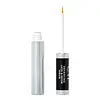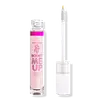What's inside
What's inside
 Key Ingredients
Key Ingredients

 Benefits
Benefits

 Concerns
Concerns

No concerns
 Ingredients Side-by-side
Ingredients Side-by-side

Water
Skin ConditioningGlycerin
HumectantPolysorbate 20
EmulsifyingHydroxyethylcellulose
Emulsion StabilisingSodium Hyaluronate
HumectantLarix Europaea Wood Extract
HumectantCamellia Sinensis Leaf Extract
AntimicrobialRicinus Communis Seed Oil
MaskingPanax Ginseng Root Extract
EmollientDisodium EDTA
Sodium Metabisulfite
AntioxidantGlycine
BufferingSodium Nitrate
SoothingZinc Chloride
AntimicrobialGlyoxal
AntimicrobialTromethamine
BufferingPhenoxyethanol
PreservativeCaprylyl Glycol
EmollientEthylhexylglycerin
Skin ConditioningWater, Glycerin, Polysorbate 20, Hydroxyethylcellulose, Sodium Hyaluronate, Larix Europaea Wood Extract, Camellia Sinensis Leaf Extract, Ricinus Communis Seed Oil, Panax Ginseng Root Extract, Disodium EDTA, Sodium Metabisulfite, Glycine, Sodium Nitrate, Zinc Chloride, Glyoxal, Tromethamine, Phenoxyethanol, Caprylyl Glycol, Ethylhexylglycerin
Water
Skin ConditioningNiacinamide
SmoothingAlcohol Denat.
AntimicrobialPEG-40 Hydrogenated Castor Oil
EmulsifyingButylene Glycol
HumectantPhenoxyethanol
PreservativeCarbomer
Emulsion StabilisingHydrolyzed Lupine Protein
Skin ConditioningRicinus Communis Seed Oil
MaskingTocopheryl Acetate
AntioxidantSodium Hydroxide
BufferingEthylhexylglycerin
Skin Conditioning1,2-Hexanediol
Skin ConditioningCaprylyl Glycol
EmollientHexylene Glycol
EmulsifyingCopper Tripeptide-1
Skin ConditioningGlycerin
HumectantBiotin
AntiseborrhoeicHexapeptide-2
BleachingMyristoyl Pentapeptide-17
Skin ConditioningBenzoic Acid
MaskingSodium Benzoate
MaskingCI 16035
Cosmetic ColorantWater, Niacinamide, Alcohol Denat., PEG-40 Hydrogenated Castor Oil, Butylene Glycol, Phenoxyethanol, Carbomer, Hydrolyzed Lupine Protein, Ricinus Communis Seed Oil, Tocopheryl Acetate, Sodium Hydroxide, Ethylhexylglycerin, 1,2-Hexanediol, Caprylyl Glycol, Hexylene Glycol, Copper Tripeptide-1, Glycerin, Biotin, Hexapeptide-2, Myristoyl Pentapeptide-17, Benzoic Acid, Sodium Benzoate, CI 16035
 Reviews
Reviews

Ingredients Explained
These ingredients are found in both products.
Ingredients higher up in an ingredient list are typically present in a larger amount.
Caprylyl Glycol is a humectant and emollient, meaning it attracts and preserves moisture.
It is a common ingredient in many products, especially those designed to hydrate skin. The primary benefits are retaining moisture, skin softening, and promoting a healthy skin barrier.
Though Caprylyl Glycol is an alcohol derived from fatty acids, it is not the kind that can dry out skin.
This ingredient is also used as a preservative to extend the life of products. It has slight antimicrobial properties.
Learn more about Caprylyl GlycolEthylhexylglycerin (we can't pronounce this either) is commonly used as a preservative and skin softener. It is derived from glyceryl.
You might see Ethylhexylglycerin often paired with other preservatives such as phenoxyethanol. Ethylhexylglycerin has been found to increase the effectiveness of these other preservatives.
Glycerin is already naturally found in your skin. It helps moisturize and protect your skin.
A study from 2016 found glycerin to be more effective as a humectant than AHAs and hyaluronic acid.
As a humectant, it helps the skin stay hydrated by pulling moisture to your skin. The low molecular weight of glycerin allows it to pull moisture into the deeper layers of your skin.
Hydrated skin improves your skin barrier; Your skin barrier helps protect against irritants and bacteria.
Glycerin has also been found to have antimicrobial and antiviral properties. Due to these properties, glycerin is often used in wound and burn treatments.
In cosmetics, glycerin is usually derived from plants such as soybean or palm. However, it can also be sourced from animals, such as tallow or animal fat.
This ingredient is organic, colorless, odorless, and non-toxic.
Glycerin is the name for this ingredient in American English. British English uses Glycerol/Glycerine.
Learn more about GlycerinPhenoxyethanol is a preservative that has germicide, antimicrobial, and aromatic properties. Studies show that phenoxyethanol can prevent microbial growth. By itself, it has a scent that is similar to that of a rose.
It's often used in formulations along with Caprylyl Glycol to preserve the shelf life of products.
Ricinus Communis Seed Oil is the INCI name for castor oil.
Castor Oil helps moisturize the skin. It is rich in a fatty acid called ricinoleic acid. This fatty acid helps prevent moisture loss on the skin. This helps keep your skin soft and hydrated. Ricinoleic acid also has anti-inflammatory and pain reducing properties.
Besides hydrating the skin, castor oil is also used to hydrate hair. By keeping the hair shaft moisturized, breakage is decreased. More studies are needed to show castor oil's effective on stimulating hair growth.
Castor oil is created by cold-pressing castor seeds and then purifying the oil with heat. It was used in Ancient Egypt as fuel in lamps and to help treat eye irritation.
The term 'fragrance' is not regulated in many countries. In many cases, it is up to the brand to define this term. For instance, many brands choose to label themselves as "fragrance-free" because they are not using synthetic fragrances. However, their products may still contain ingredients such as essential oils that are considered a fragrance.
Learn more about Ricinus Communis Seed OilWater. It's the most common cosmetic ingredient of all. You'll usually see it at the top of ingredient lists, meaning that it makes up the largest part of the product.
So why is it so popular? Water most often acts as a solvent - this means that it helps dissolve other ingredients into the formulation.
You'll also recognize water as that liquid we all need to stay alive. If you see this, drink a glass of water. Stay hydrated!
Learn more about Water